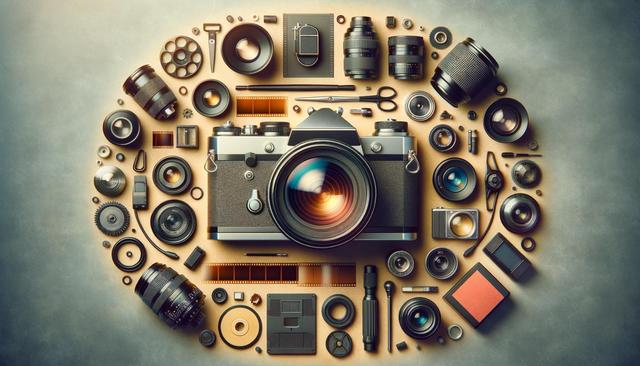Introduction to Photography: Capturing Stunning Images with a DSLR
Photography is a captivating art form that allows individuals to capture stunning images and moments with the use of a DSLR camera.

The Basics of DSLR Photography
Delving into the world of DSLR photography opens up a realm of creative possibilities. A DSLR, or Digital Single-Lens Reflex camera, offers advanced features that can significantly enhance the quality of your photos. These cameras are known for their ability to capture high-resolution images, thanks to their large sensors and interchangeable lenses. Understanding the basics of DSLR photography involves familiarizing yourself with the camera’s manual settings, which can initially seem daunting but are crucial for developing your skills.
Key features that set DSLRs apart include:
- Interchangeable lenses: Allowing for versatility in capturing wide-angle landscapes or zoomed-in portraits.
- Manual controls: Offering the ability to adjust exposure, aperture, and shutter speed for precise control over your images.
- Optical viewfinder: Providing a real-time view through the lens for accurate framing and focus.
By mastering these elements, photographers can create images that truly reflect their artistic vision.
Mastering Exposure and Lighting
Exposure is a fundamental aspect of photography that determines how light or dark an image appears. It is controlled by three main settings: aperture, shutter speed, and ISO. Each of these settings influences the exposure in different ways, and understanding their interplay is key to capturing well-lit images.
Aperture, measured in f-stops, controls the amount of light entering the camera. A wider aperture (lower f-stop) allows more light and creates a shallow depth of field, ideal for portraits. Shutter speed, measured in fractions of a second, determines how long the camera’s sensor is exposed to light. Faster shutter speeds are used to freeze motion, while slower ones can create motion blur effects. ISO sensitivity affects the camera’s sensitivity to light; higher ISO settings are useful in low-light conditions but can introduce noise.
Lighting also plays a crucial role in photography, and photographers often seek out the ‘golden hour’—just after sunrise or before sunset—when the light is soft and warm. Using reflectors or external flashes can help manipulate light to achieve the desired effect.
Choosing the Right Lens
The choice of lens can greatly impact the outcome of your photographs. DSLR cameras offer the flexibility of interchangeable lenses, each suited for different types of photography. Understanding which lens to use in various situations is essential for capturing the best possible images.
Common types of lenses include:
- Wide-angle lenses: Perfect for landscapes and architecture, allowing you to capture more of the scene.
- Standard lenses: Often used for everyday photography, offering a natural perspective similar to the human eye.
- Telephoto lenses: Ideal for wildlife and sports photography, enabling you to zoom in on distant subjects.
- Macro lenses: Designed for close-up photography, capturing fine details of small subjects like insects and flowers.
Experimenting with different lenses can help you discover new perspectives and styles, enhancing your photographic repertoire.
Developing Your Photography Style
As you gain experience with your DSLR, developing a unique photography style becomes an exciting journey. Your style is a reflection of your personality and interests, and it evolves as you explore different techniques and genres.
Here are some tips to help cultivate your photography style:
- Study the work of renowned photographers to understand various styles and techniques.
- Experiment with different subjects, from landscapes to portraits, to find what resonates with you.
- Practice post-processing skills to enhance your images and add a personal touch.
- Seek feedback from peers and mentors to gain new insights and perspectives.
By consistently experimenting and learning, you can refine your style and develop a portfolio that showcases your unique vision.
Conclusion: Embarking on Your Photography Journey
Embarking on the journey of DSLR photography offers endless opportunities for creativity and expression. By mastering the basics, understanding the importance of exposure and lighting, choosing the right lenses, and developing a personal style, you can capture stunning images that tell compelling stories. Photography is not only about technical skills but also about seeing the world through a unique lens. As you continue to explore and grow as a photographer, remember that each click of the shutter is a step forward in your artistic journey. Whether you aim to capture breathtaking landscapes or intimate portraits, the possibilities are vast, and the learning never truly ends.